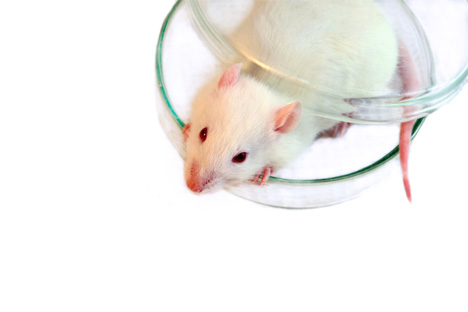Navigation
Hair Loss News Archives
April 2005
Adult stem cells found in mouse hair follicles
Adult stem cells have been found in fat. They've been found in bone marrow, blood, heart tissue and brain matter. Now they've been located in mouse hair follicles.
Is there any place in the body that stem cells can't be found?
Probably not, said Robert Lanza, vice president of medical and scientific development at Advanced Cell Technology, a Worcester, Mass.-based biotech firm specializing in medical applications of stem cells.
"Most of the organ systems in the body harbor stem cells that have regenerative power," he said. The question is whether these cells can be "harnessed to cure human disease."
Stem cells are the primordial goo from which other cells arise. In general, scientists agree there are two types: embryonic stem cells, which have the ability to differentiate into every cell type - including eggs and sperm - and the more limited adult stem cells found in differentiated tissue such as fat and muscle that appear to be able to give rise to some cell types, but not all.

According to Lanza, what you ultimately want from a stem cell, whether it be embryonic or adult, is the ability to expand it - to produce large numbers of cells in the lab - and maintain it indefinitely.
It's all well and good to say you have isolated stem cells from brain matter, he said, but if it means "chopping the brain up into tiny pieces" in order to use it, well, that's not doing anybody any good.
That's why the news about hair follicles is so exciting.
Not only do mammals have a lot of hair - a hirsute human scalp has more than 100,000 hair follicles - but according to the researchers who isolated the cells, they can be expanded in culture. That means a small snippet of skin is all that's needed to start a colony.
And Robert Hoffman, president of AntiCancer, a biotech company in San Diego, and principal investigator of the mouse-hair follicle research, said the cells seem to live for a long time.
Whether they can live indefinitely is not known, said Hoffman.
Hoffman worked with researchers from Kitasato University School of Medicine in Sagamihara, Japan, the University of California- San Diego, and the Massachusetts Institute of Technology. Their research appeared in last week's Proceedings of the National Academy of Sciences.
The stem cells also appear to have the ability to differentiate into neurons, as well as new hair follicles and skin. This means they have therapeutic promise, if Hoffman's results can be translated into humans.
"Hair is a primitive feature," he said. And because it's a feature all mammals share - and have shared since the first mammal appeared on the planet more than 65 million years ago - the hair cells in a mouse should be similar to those in a person.
But he said their discovery that these cells could grow into neurons was serendipitous.
Hoffman's team specializes in imaging, or doing high-tech visual examinations, of genetically engineered animals.
A few years ago, Hoffman's team received mice that had jellyfish proteins attached to their DNA. The proteins were there to "tag" a neural marker called nestin. The idea was if the marker was there, it would appear green.
They found the marker, but it was more widespread than they had imagined.
"Their skin was so green you couldn't even look at the brain," where they had expected to see most of the nestin, said Hoffman. "We didn't expect it, but when we saw it, we knew what it meant."
The hair follicles were full of nestin - implicating that something, presumably stem cells, in the hair follicle was giving rise to neurons.
To verify that what they were seeing was real, they isolated the hair follicle stem cells, placed them in a cell culture and let them grow.
In a matter of days, and with just a little coaxing, the stem cells grew into neurons.
In retrospect, Hoffman's not surprised.
"Hair is the only organ in the body that recycles itself throughout its life," he said. So, it's a no-brainer that stem cells should be found there.
And the therapeutic promise of isolating stem cells from hair is especially exciting to Hoffman.
"I mean, hair is just about the most accessible thing you could imagine," he said.
